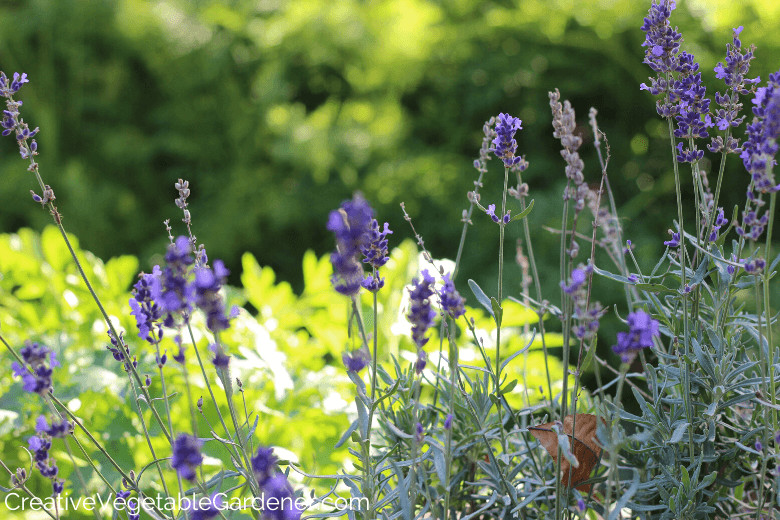
Who can resist the delightful and calming scent of lavender? You may think it’s only a summer scent, but if you learn how to dry lavender, you can immerse yourself in it all year long.
Lavender’s showy blooms will bring a touch of the Mediterranean to any garden. The blooms can also be cut and used in bouquets and, when dried, will retain their fragrance for up to three years. So, it works well in dried flower arrangements or in potpourris, sachets, or homemade soaps.
But how to dry lavender? What growing conditions does it require, and how do you harvest it for maximum beauty?
Relax (ha!)! You don’t need a green thumb to grow lavender, and it’s not necessary to invest a lot of time and muscle work into it. It does, however, help to understand a little bit about this fragrant herb. So, I’m going to share some tips with you about how to grow, harvest and dry lavender.
This post contains affiliate links.
How To Grow Lavender in Your Home Garden
The first step is to choose the variety. There are three primary types of lavender, French (Lavandula intermedia), English (Lavendula angustfolia) and Spanish (Lavandula stoechas).
If you live in a cold climate, English lavender is the most cold hardy. Many growers in my area of Wisconsin recommend Munstead and Hidcote as reliable performers for home gardeners. French and Spanish varieties are more suited to warmer climates.
Because lavender is difficult to grow from seed, I recommend purchasing plants from your local nursery or farmers market. They should sell the varieties that are known to do well in your garden zone.
The second step in growing lavender is to familiarize yourself with its ideal growing conditions – full sun and well-drained soil. Lavender is native to Southern Europe, where the soils are poor and rocky and the climate is dry and hot.
The most important thing to remember is that lavender has to have good drainage. If your garden has heavy clay soil, like mine, consider planting the lavender in a raised bed so the water drains more efficiently away from the plant. I love growing growing lavender and other herbs in a spiral-shaped bed, or herb spiral.
If you have a wet climate and clay soils, you’ll want to amend the soil with compost. It might even be a good idea to add some gravel.
I’ve found in humid climates, it’s a good idea to space the plants far apart so that more air can circulate around them.
Because lavender prefers dry soil, be careful not to overwater the plant. Fertilization is not necessary since lavender naturally grows in poor soils.
And lastly, lavender is listed as a perennial in zones 5-10, but I’ve found that in my zone 5a garden it often acts more like an annual. It struggles to survive the winter.

How Often To Water Lavender
If you want to grow healthy lavender, the first thing to understand is that this plant hates having wet feet.
Lavender is native to the hot, dry southern European climates, so it requires very little water. Immediately after you’ve set it out, water a couple of times a week until it can become established. Once it’s established, it will usually only need water once a week, or less if you live in a climate that receives regular rainfall.
Do not overwater! Lavender has a very low tolerance for soggy soils and humid conditions.
If you’re growing in containers, you will need to check the plant more often and water when the soil has become completely dry.
How To Harvest Lavender
It’s best to harvest lavender in spring after it puts out buds but before the flowers are fully opened. Lavender is a repeat bloomer, meaning that it can bloom more than once in a season, and harvesting early will encourage another round of blooms and more growth throughout the summer.
Harvesting before the buds flower is also when the oil content is highest and fragrance is strongest.
To harvest the flowers, use sharp clippers (my favorites). Choose the flowers you want to harvest, and follow the stem down to a junction, where there are two side leaves. Clip here for harvesting blooms or shorter-stemmed flowers. If you want longer-stemmed flowers for taller vases, follow that flower stem down to where it meets the plant’s main stem.
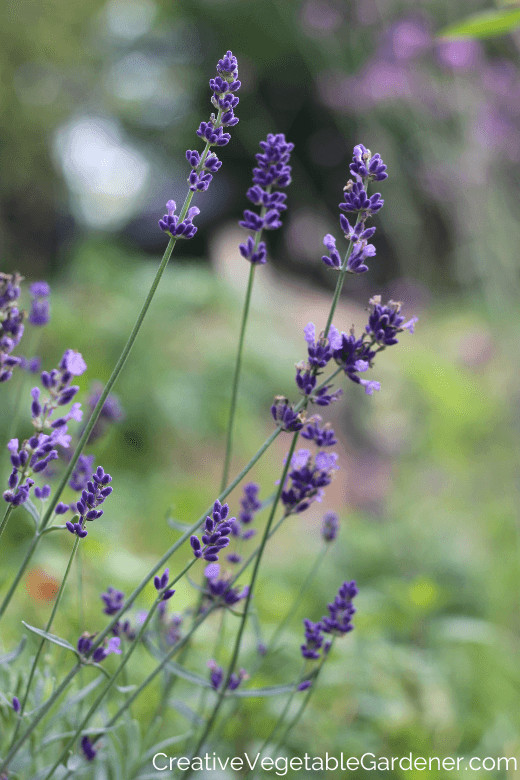
How To Dry Lavender
Lavender dries best in a warm, dry location with good air circulation.
You can find lots of pretty photos on the internet of bundles of lavender hanging up to dry in picturesque homes. To be honest, as a lazy gardener I often don’t make bundles of herbs to dry. I use small brown paper bags with handles, similar to what you would receive in a gift shop. I harvest the flowers or herbs right into the paper bag and then hang it up in my house to dry.
If you are more thorough, and less lazy than me, you can bundle the stems together with twine and hang the bundles upside down in an artsy manner. Just make sure you choose a spot away from direct sunlight, which can fade the leaves.
If you have enough space, you can also spread the lavender out in a thin layer across your kitchen counter or use an herb drying rack. If you have a dehydrator, that is an option to speed things along as well.
It can take two weeks to a month for it to dry, depending on how warm and dry the environment is.

Using Lavender Leaves
Of course, lavender is grown for culinary uses as well as for its fragrance and beauty. The flowers can be chopped and added to butter, used in baking desserts, or infused in honey or teas. If you’re growing it for cooking purposes, you don’t want to waste those delectable lavender leaves.
Lavender leaves can be used as a spice in cooking, and may even be used as a substitute for rosemary. They can also be used in spice blends or infused in vinegar and used as a salad dressing. To dry lavender leaves, simply snip them with sharp scissors, arrange them on a paper towel, and leave them on a counter for several days until they are dry.
Here are six great ideas for using lavender leaves.
Ideas for Using Lavender
There are lots of ideas around the internet for how to use lavender. Here are some of my favorites.
Home and Beauty Products:
- How to Make Homemade Lavender Oil, and 9 Ways to Use It
- How to Make Homemade Lavender Salve to Soothe Skin & Nerves
- Lavender Hand Scrub for Gardeners
- How to Make Lavender Linen Water (DIY Lavender Spray)
- How to Make Natural Lavender Body Balm
Cooking Recipes:
My Lavender Died. Why Did That Happen?
In my garden, I’ve struggled to keep lavender alive year round.
Overwatering is the most common problem that most gardeners have with lavender. Lavender hates wet feet, and it also hates high humidity. Space the plants far apart in open areas where plenty of air can circulate around them, and water only when the soil is thoroughly dry.
If your lavender dies over the winter, it may be that it’s not hardy in your zone. Check the cold hardiness of the plants before you buy them. You can also try lightly covering the plants with evergreen boughs or straw to protect them from harsh winter weather, but since they don’t like moisture, make sure you don’t layer on too thick.
Growing, harvesting, and drying lavender can be fun and easy if you follow these guidelines. This season, try mixing in some lavender plants among your vegetables, or even creating a bed full of fragrant lavender plants!
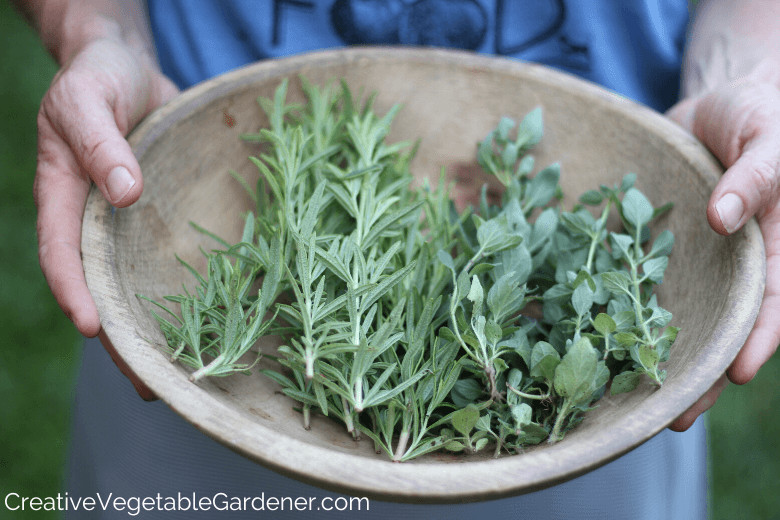
More Resources for Growing, Harvesting and Preserving Herbs
Most herbs are incredibly easy and rewarding to grow in your vegetable garden. And there’s nothing quite like fresh herbs to elevate whatever dish you’re cooking for dinner.
FREE MINI COURSE
My free mini-course, Getting Started Growing Herbs in Your Garden, is a small taste of the below Masterclass. The mini-course features 5 videos and worksheets to help you:
- Learn why growing herbs is SO easy and worth it!
- How to choose which herbs to grow in your garden.
- Where to plant your herbs so they’ll be successful.
MASTERCLASS
My how-to video series, All About Gardening with Herbs: Your Guide to Growing, Harvesting, Cooking With, & Preserving a Bounty of Herbs, is my most popular class! If you’re ready to delve more deeply into the wondrous world of growing your own herbs, find out more here.
ARTICLES
How to Easily Build an Herb Spiral Garden
Easily grow great basil this year with these simple tips
Best ways to preserve the summer basil harvest
How to Prevent Cilantro From Bolting and Tips For Successful Growing
Simple ways to successfully preserve garden fresh cilantro
SHARE IT ON PINTEREST

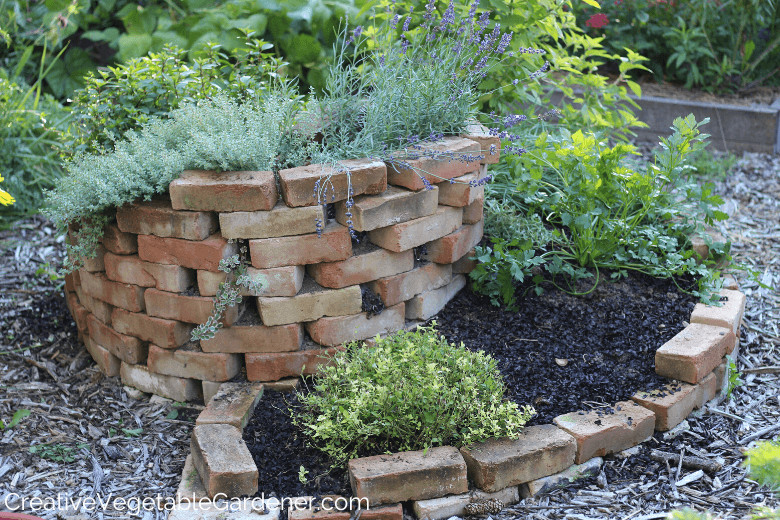


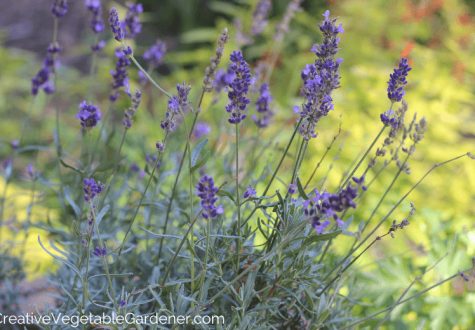




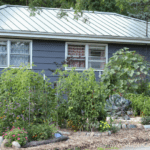
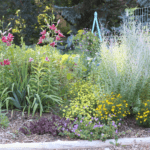
Comments
[…] Lavender’s lovely, delicate fragrance is also a favorite in potpourris, and it’s often used in making soaps and lotions. If you’re interested in making your own potpourri or drying lavender for tea or baking, learn more about simple ways to dry lavender from your garden. […]